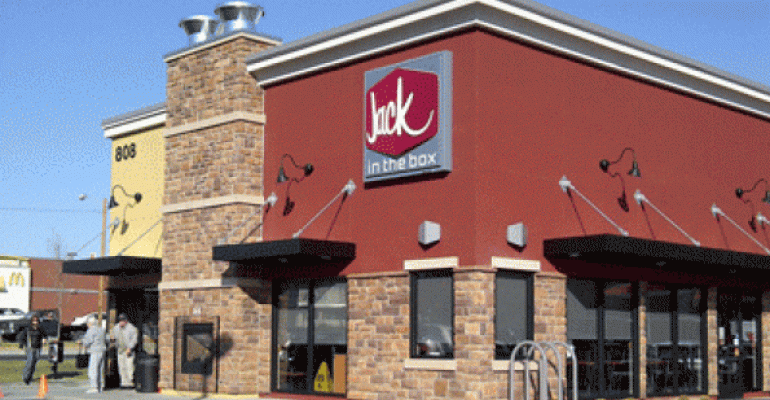Jack in the Box Inc. is expanding a franchise seed program that it says helps increase brand awareness and drive unit growth in new markets, while furthering the company’s goal of becoming a dominantly franchised chain.
The program works by opening company-operated restaurants in new markets, which are destined to be sold as packages to experienced franchisees.
The San Diego-based operator and franchisor of quick-service restaurants opened its fourth seed-program market Monday, with the debut of a new company-owned Jack in the Box unit in Indianapolis, according to Grant Kreutzer, director of franchise licensing and recruitment. Two more restaurants are slated to open there this spring, he said.
“Some brands out there may have a market available and you can franchise them, but we want to be there and launch a new market with all of those benefits,” Kreutzer said. “When the company goes in and launches — say an Oklahoma City or Kansas City — we’re controlling how the brand is first being positioned in the market. We can use the high profile locations and have the resources and capital to move quickly to secure the best sites and launch the brand in the right way.”
The scheduled late spring groundbreaking for a company restaurant in Cincinnati will make that the fifth such seed market under the program begun in the spring of 2010.
The company created the seeding strategy in response to its decision about five years ago to move the Jack in the Box system from primarily company-operated restaurants to mostly franchised units. The program helps drive collaboration with franchisees to pioneer new markets that are contiguous to established trading areas, Kreutzer said.
Jack in the Box unveiled the first such company seed restaurant in Tulsa, Okla., about 21 months ago, and since then has opened three more in that market. Kreutzer said the company also has developed five restaurants in Oklahoma City, with two more to open their doors next month, and four restaurants in the market spanning Kansas City, Mo., and Kansas City, Kan.
Jack in the Box has largely succeeded in its repositioning plan, through refranchising, with its chain’s percentage of franchise restaurants growing from about 26 percent five years ago to 72 percent today. For the fiscal year ended Oct. 2, the Jack in the Box system included 2,221 restaurants in 19 states, of which 629 were company-operated and 1,592 were franchise-operated.
“A benefit is that potential franchisees can see restaurants in their markets in action, see sales performance and see trends,” Kreutzer said.
The second half of the seeding strategy calls for offering those company restaurants as an acquisition package to a qualified local restaurant group, including mid-sized, multi-unit franchisees of other non-competing foodservice chains, such as family-restaurant operators, Kreutzer said.
He said such new franchisees also will be offered additional incentives, such as waivers of the chain’s $50,000 franchising fee and a 50-percent discount on royalties for the first two years, “so they can reinvest that savings in training, hiring and marketing and further developing the brand in their areas.”
To further help new franchisees promote the brand in emerging markets, Jack in the Box is altering its formula for the use of franchisee-paid marketing fees, said Brian Luscomb, divisional vice president of corporate communications.
“Whereas approximately 75 percent of our franchisees' contribution to the marketing fund [traditionally] supports our national advertising campaign, in new markets where there is no existing TV support that 75 percent will be allocated to support local marketing efforts,” Luscomb said.
Kreutzer said Jack in the Box will begin aggressive outreach to potential buyers of seed restaurants after those units have been in operation for about nine months. He added that “a year to a year and a half seems to be a good time frame” related to how long the company might end up operating seed locations prior to their sale.
“The restaurants that we've opened in new markets over the past couple of years generally open with sales higher than our system average,” Luscomb said.
“There's a lot of excitement and anticipation that builds as we enter new markets, and Indianapolis is a great example. Despite rain and temperatures in the 30s, the restaurant is packed today for our grand opening,” he added.
Jack in the Box officials declined to disclose how much money the company has budgeted towards the seeding program.
The seeding program could prove key to Jack in the Box’s future, Kreutzer said, as “we’re only in 20 states and have plenty of room to grow.”
Contact Alan J. Liddle at [email protected].
Follow him on Twitter: @AJ_NRN

